Amid the extensive managerial merry-go-round in Europe at the moment, one of the most intriguing, if not surprising, appointments has been Marco Silva to Fulham on a three-year deal.
The Portuguese boss has had mixed results in English football and tends to undergo a Jose Mourinho-type self-destruction with every club he has been with so far.
At Hull City, the young coach arrived from Greece having won the Greek Super League with Olympiakos with a 79 percent win record over the course of the 2015/16 season. At Hull, things got off to a flier and it looked as though the Tigers were miraculously staying up for another season until it eventually fell apart and they were ultimately relegated under Silva.
Then, at Watford, the Hornets were shooting up the table early on after some truly excellent results, and Silva found himself heavily linked with the Everton job. Within the next few months, Watford fell off the boil and Silva was sacked in the end.
Finally, there was Everton, his most recent job in football. In the 2018/19 season, the Toffees finished eighth, a very respectable finish, but like always, by December of the 2019/20 campaign, Everton were sitting in the relegation zone and Silva was relieved of his duties.
The 43-year-old still has a lot to do to prove his critics wrong and helping Fulham to bounce back up to the Premier League, following their feeble relegation last season, would be the perfect way to do so.
This article will be a tactical analysis in the form of a managerial scout report of Marco Silva. It will be an analysis of the tactics he tends to use as well as how he will implement his philosophy into the Cottagers.
Predicting Fulham’s starting eleven and main formation
Predicting Fulham’s starting eleven will be quite difficult considering the fact that Silva was appointed as the manager of Fulham on July 1, just over two weeks ago, meaning the Portuguese boss has had very little time to get a full understanding of his squad’s capabilities, strengths, and weaknesses.
However, in terms of what formation he is likely to deploy, Silva has typically stuck with a 4-2-3-1 or a 4-3-3 throughout his career. When in possession though, it is difficult to pinpoint which midfield system Silva’s sides are playing with as the three central midfield rotate constantly.
Sometimes his teams use a ‘6’ with two more advanced ‘8s’ who push between the opposition’s midfield and backline, but merely a few minutes later they could be using a double-pivot of two ‘6s’ to receive the ball from the backline and one ‘8’ pushing between the lines.

The midfielders can be classified as the most important aspect of any footballing system and this is certainly the case for Silva’s teams. The three central midfield players in the manager’s systems always have different player profiles.
Typically, one midfielder will be the sitting midfielder with the sole purpose of protecting the backline such as Idrissa Gueye at Everton, or Etienne Capoue/Nathaniel Chalobah at Watford. Harrison Reed could certainly occupy this role and most likely will in the new campaign.
The other two central midfielders are generally more progressive with the ball, one making runs from deep as a box-to-box midfielder while the other is the team’s main creator. At Everton, Tom Davies/Andre Gomes and Gylfi Sigurdsson occupied these roles whilst Abdoulaye Doucoure and Tom Cleverley/Roberto Pereyra were tasked with fulfilling these roles by Silva at Watford.
For Fulham, looking at the profile of players in the team, perhaps Tom Cairney and Andre-Frank Zambo Anguissa could fulfill these responsibilities, although with talks of Anguissa leaving in the summer, the club may be forced to dip into the transfer market.
This could potentially be the starting eleven that Silva deploys when his team hosts Middlesbrough on the first day of the season.
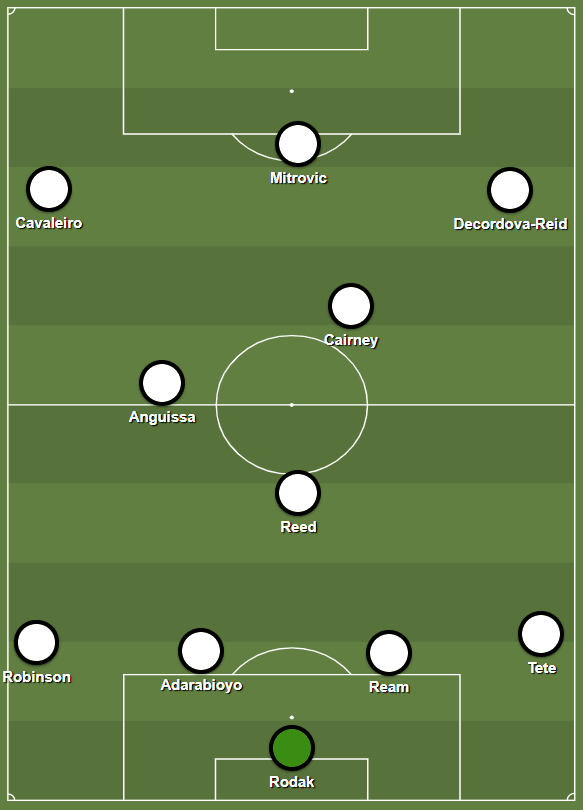
It looks likely that Tosin Adarabioyo may be leaving the club in the summer as interest has been attracted from Premier League clubs including Newcastle United and Arsenal so another centre-back may be needed too as well as possibly a goalkeeper and another centre-forward.
Play in possession
There seems to be a notion that Marco Silva implements a possession-based style of football with all of the sides that he coaches. While this is partially true, the 43-year-old is very much from the Portuguese school of coaching which still puts heavy emphasis on attacking transitions as a primary source of chance creation.
Nonetheless, Silva’s sides are decent in possession and usually build up with a 4-2 structure against the opposition’s first line of pressure.
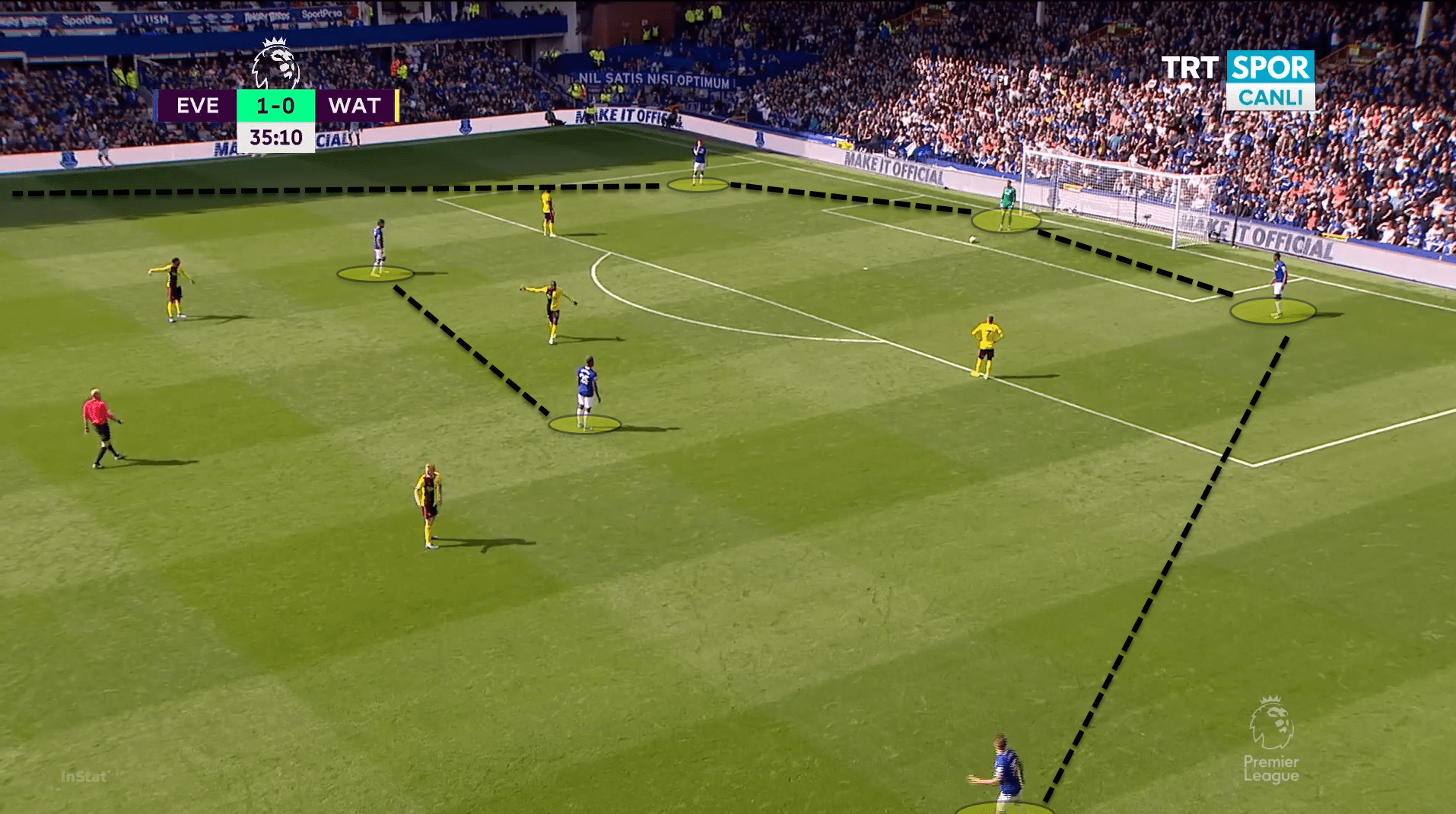
In this structure, the fullbacks move quite high and the double-pivot drop rather low. Fulham are used to using this structure when building out from the back under Silva’s predecessor at Craven Cottage, Scott Parker, now of Bournemouth.
The 4-2-3-1 formation was Fulham’s most used formation last season and Parker deployed it in exactly 33 percent of their games.
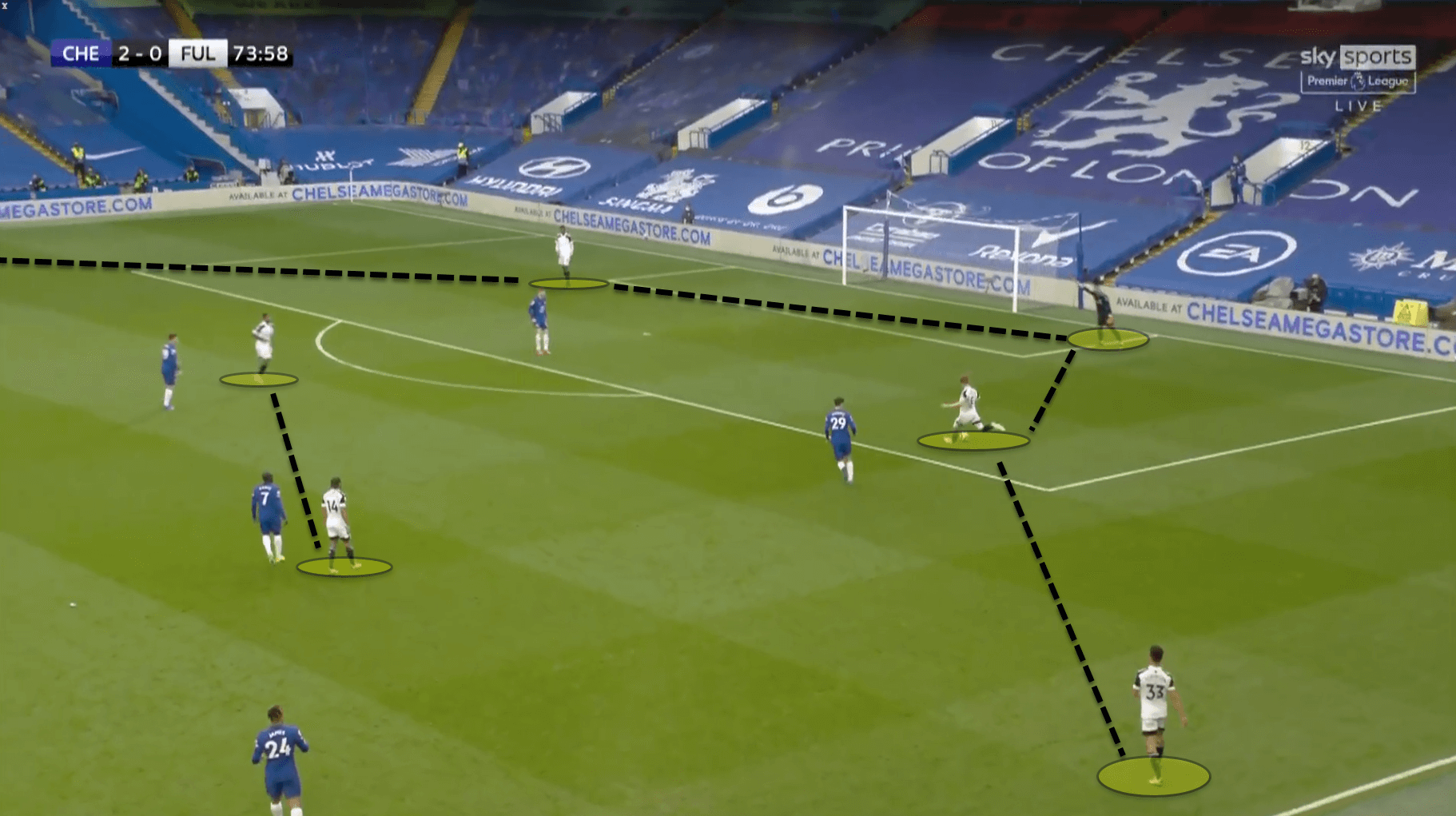
There were slight differences with Fulham’s setup in that the double-pivot were generally more stretched and that the fullbacks were quite low as opposed to how Silva’s teams set up.
However, the structure was still similar and for Silva, one of his priorities will be to help his new team perfect their ability to play out from the back, an area that they tended to struggle in last season during their relegation campaign.
Further up the pitch, when Silva’s teams have established possession in a positional attack, his players are tasked with being as vertical as possible in their attacking play. This means one of two things. Firstly, all of Silva’s teams have rapid players along the frontline, typically with the exception of the centre-forward. The forward line is tasked with making runs to attack the depth of the pitch as this stretches the opposition’s backline vertically but also allows for a chance to get in behind the backline.
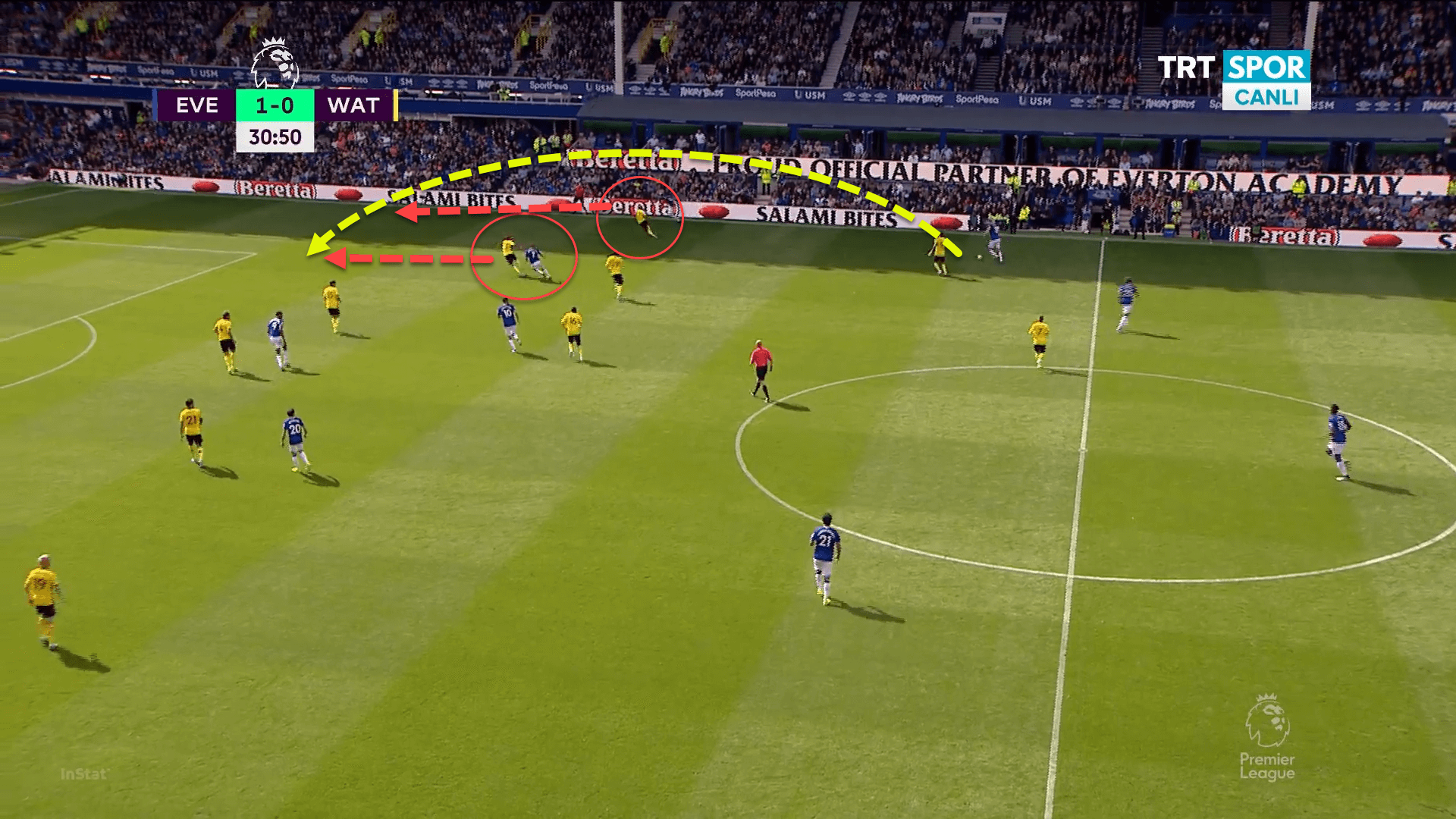
Secondly, being vertical in possession also means that Silva wants his players, particularly his midfielders and defenders, to break the opposition’s line quickly while the players further up the pitch try and create good passing angles to play through.
In order to do this, Silva usually pushes a lot of bodies forward to position themselves between the lines and create positional superiority within the opposition’s defensive block.
This is where the switch from a double-pivot to a single-pivot comes into play, which was spoken about in the first section of this article. One of the midfielders in the double-pivot will become an ‘8’ rather than a ‘6’ and push up between the lines to give extra bodies in this area of the pitch.
The fullbacks also advance high and keep the width which allows the wingers to invert inside too.
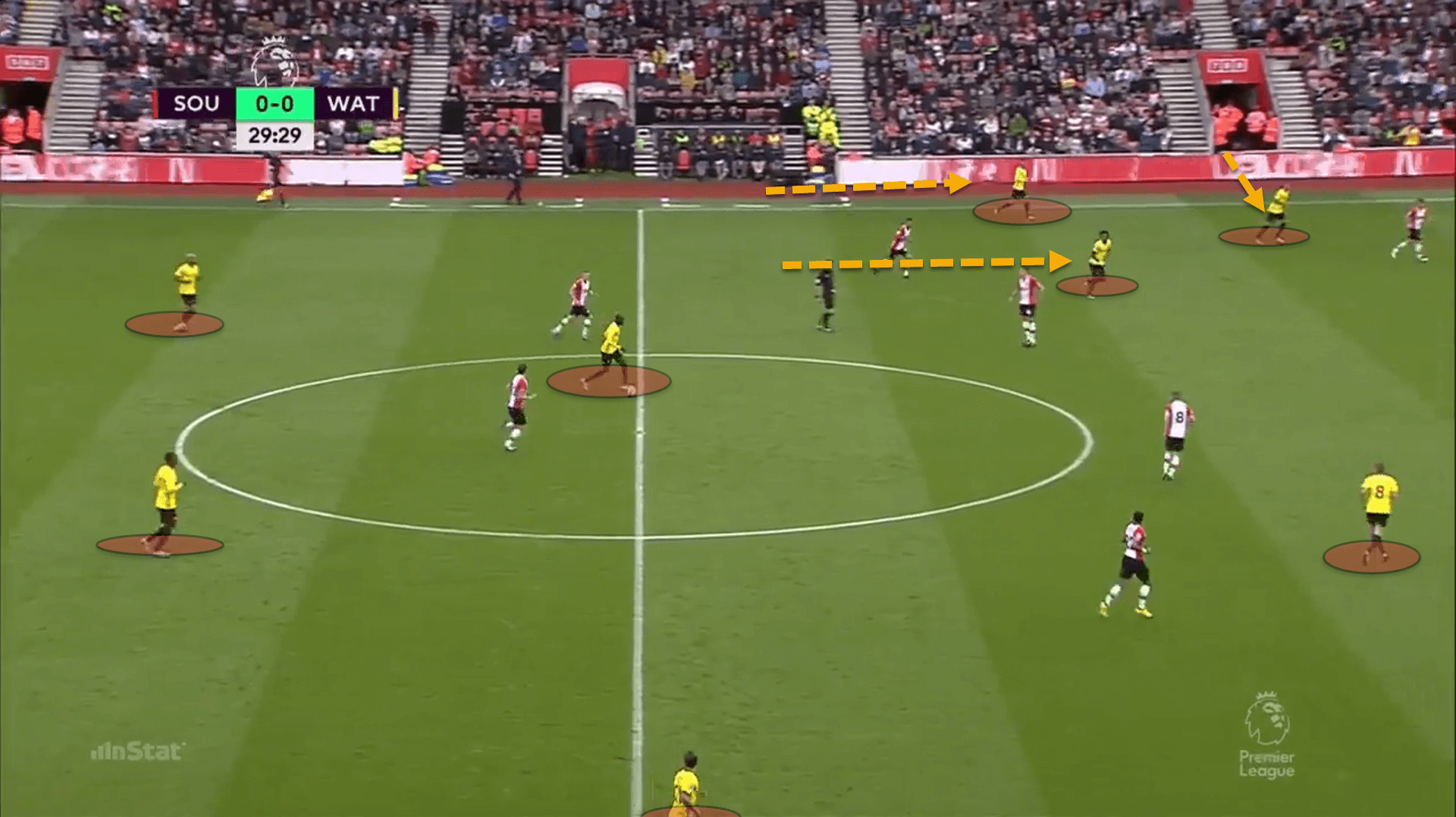
As already stated, the instructions that Silva bellows to his players are to ensure that they are not stagnant in possession. When in positions, such as the one seen above, the emphasis from the manager is to play the ball forward to the players between the lines or to runners in behind.
This can be very risky at times but also has major rewards and is very entertaining for fans to watch.
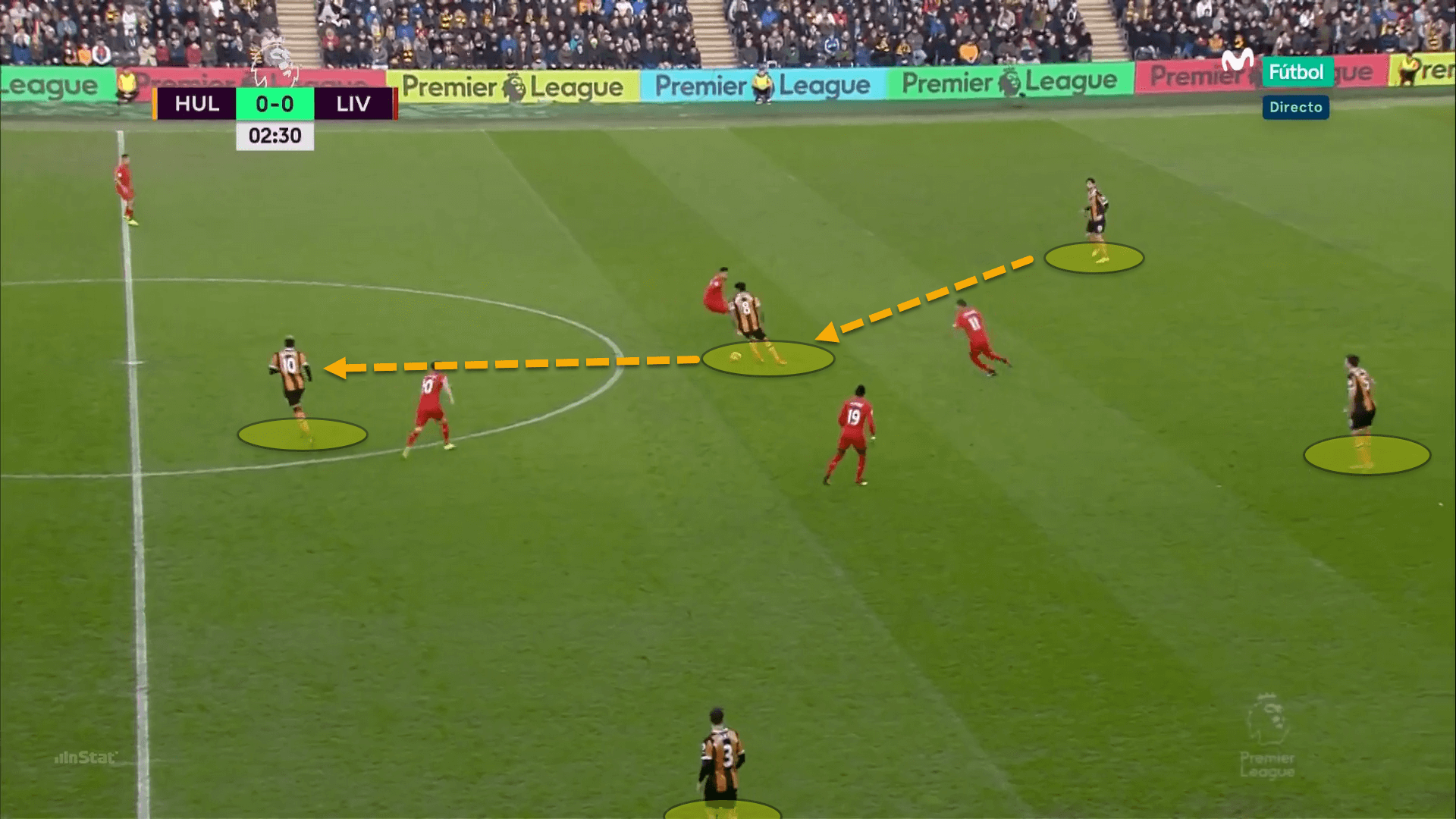
Here is a wonderful example of this vertical possessional play by a team managed by Marco Silva. Hull City centre-back Andrea Ranocchia played a pass into the feet of Tom Huddlestone which broke their opponent’s first line of pressure.
The former Spurs midfielder turned on the ball and played another pass forward into Alfred N’Diaye, who pushed up between the lines, which broke the second line. It must be noted that their opponents in this game were Jurgen Klopp’s Liverpool, one of the best pressing sides in European football.
Silva’s teams are generally rather fearless in possession, taking risks, but sometimes these risks don’t always reap rewards and can leave the backline exposed in defensive transition when the ball is overturned.
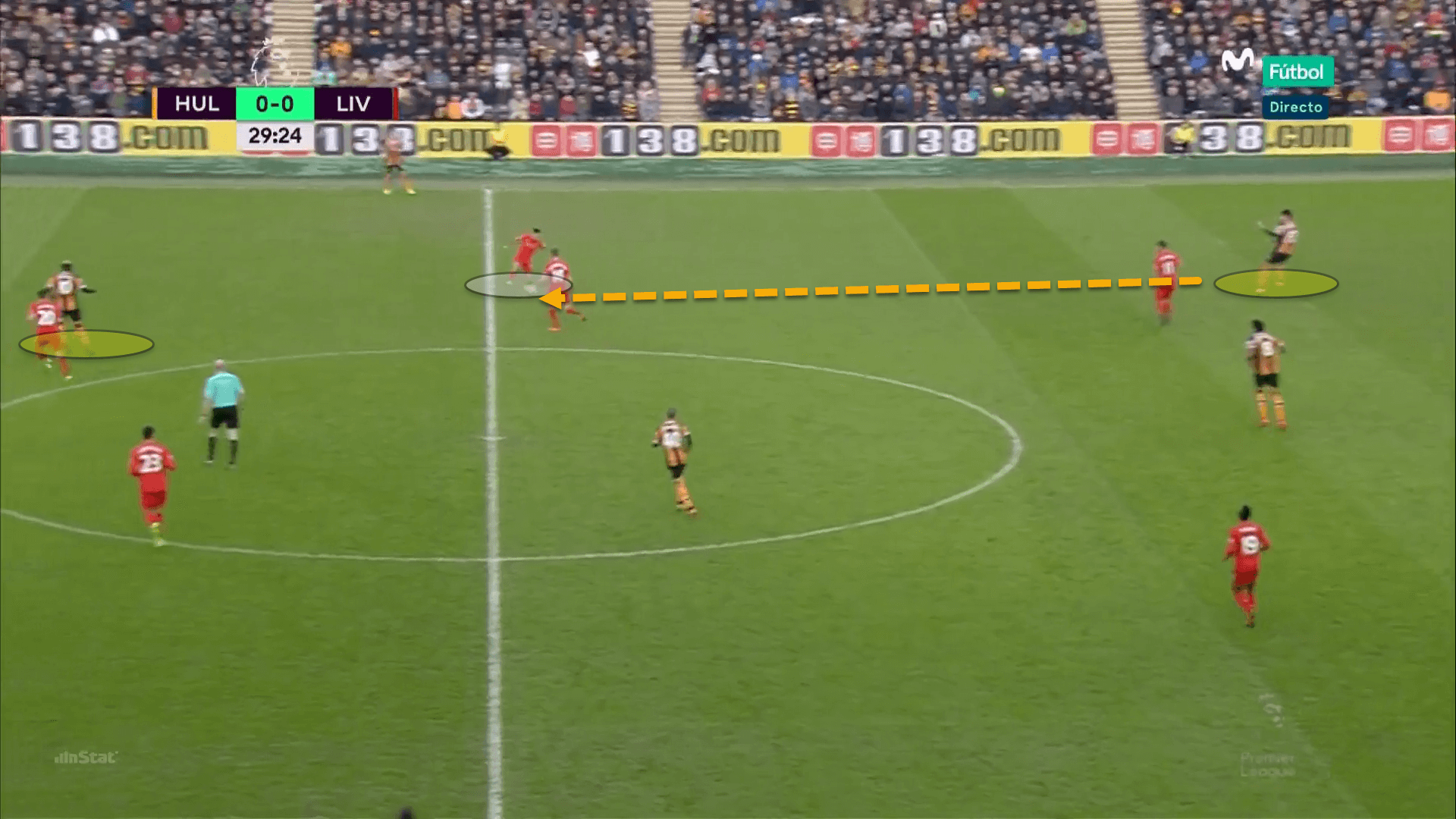
Here, Ranocchia tried to play a pass straight to N’Diaye but it was cut out and Hull were left exposed to a rapid transition.
In terms of how Fulham will fare playing this type of vertical possession, signings may be needed in the summer window to help them bring in central defenders and a goalkeeper who is more comfortable in possession and playing a riskier style of football.
In terms of how Fulham will look to create opportunities to score, Marco Silva’s sides tend to put crosses into the box when they reach the final third. In Silva’s only full season with a team in English football, the 2018/19 campaign with Everton, the Toffees were the fifth-highest crossing teams in the top-flight division.
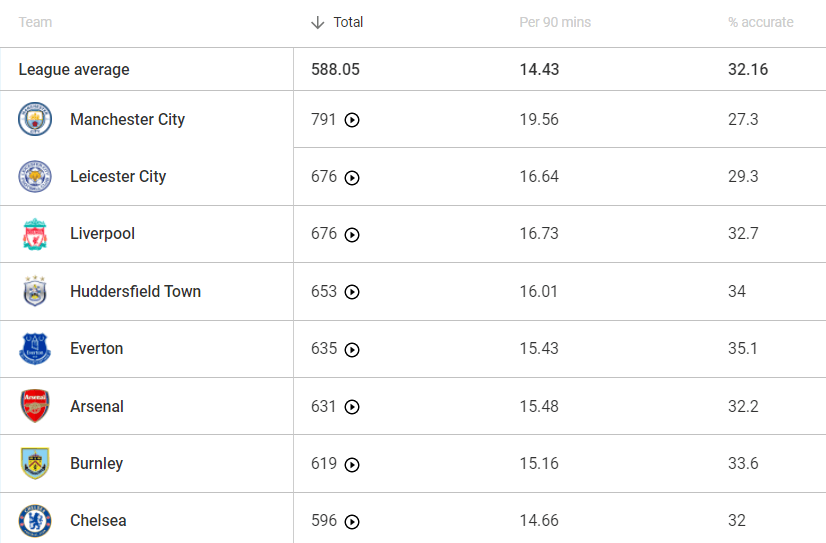
Everton were averaging 15.43 crosses per 90 and more what is more interesting is that 35.1 percent of these crosses were accurate which was the highest in the Premier League that season, showing clear signs that crossing was worked on quite a lot in training under Silva.
Last season, Fulham were the ninth-highest crossers of the ball in the league and had the fifth-highest accuracy from these crosses, a solid base for the Portuguese manager to work with ahead of the new EFL Championship campaign.
With a centre-forward leading the line such as Aleksandar Mitrovic, crossing will be very important for Fulham, particularly in games where the opposition is proving difficult to break down.
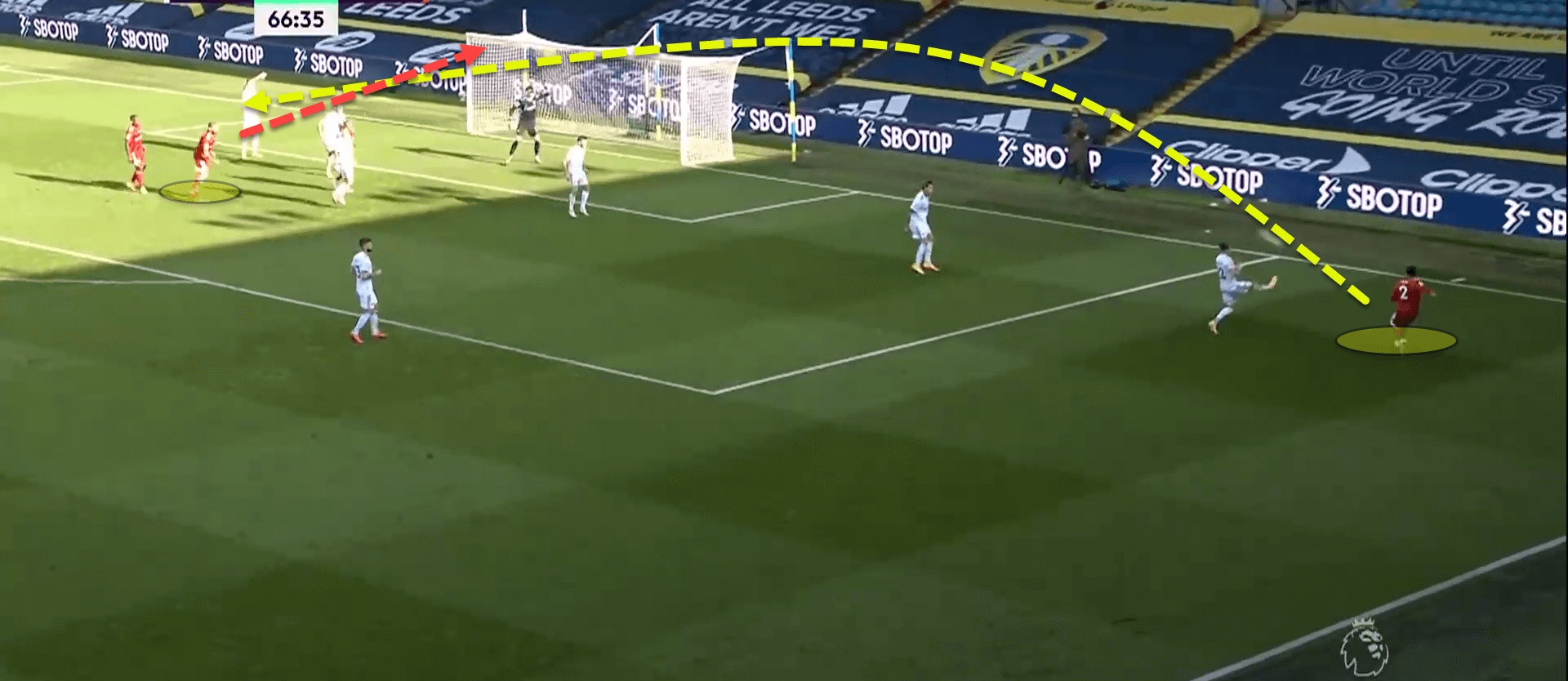
Defensive phases – proactive and compact blocks
Silva’s teams do press high when the opposition are in the build-up phase but typically the objective of the high press that his teams apply is to contain the opposition as opposed to being aggressive and trying to win the ball back.
Generally, the 43-year-old instructs his teams to sit compact, narrow, and deeper on the pitch, in either a mid-level block or a low block. However, unlike a lot of teams who sit in low blocks, Silva’s teams are very proactive, constantly working to shut off space, force the opposition wide and be aggressive with their challenges when a chance appears to regain possession.
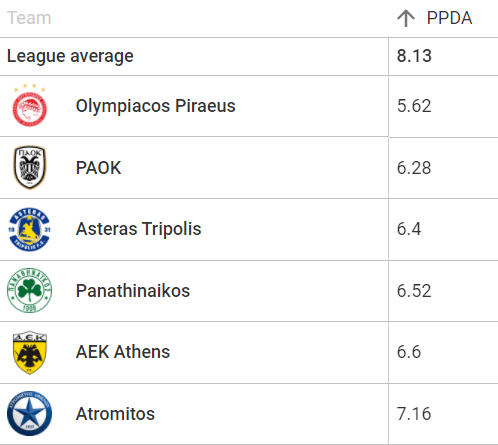
En route to winning the Greek Super League in the 2015/16 season under Silva, Olympiakos had a Passes allowed Per Defensive Action of 5.62 over the course of the entire league campaign, which was one of the lowest in Europe.
At Everton, the PPDA under Silva was 9.53 while during his time at Watford, the Hornets registered 10.69 PPDA. There is a clear emphasis from Silva that he wants his sides to be active and engage in defensive duels all the time, despite not pressing too high up the pitch.
Like all of Silva’s teams when a 4-2-3-1/4-3-3 is deployed, Fulham will defend in a 4-4-2 shape out of possession. The former Estoril and Sporting Club de Portugal boss likes his sides to stay compact between the lines and to hold a mid-level block for as long as possible before dropping deeper.
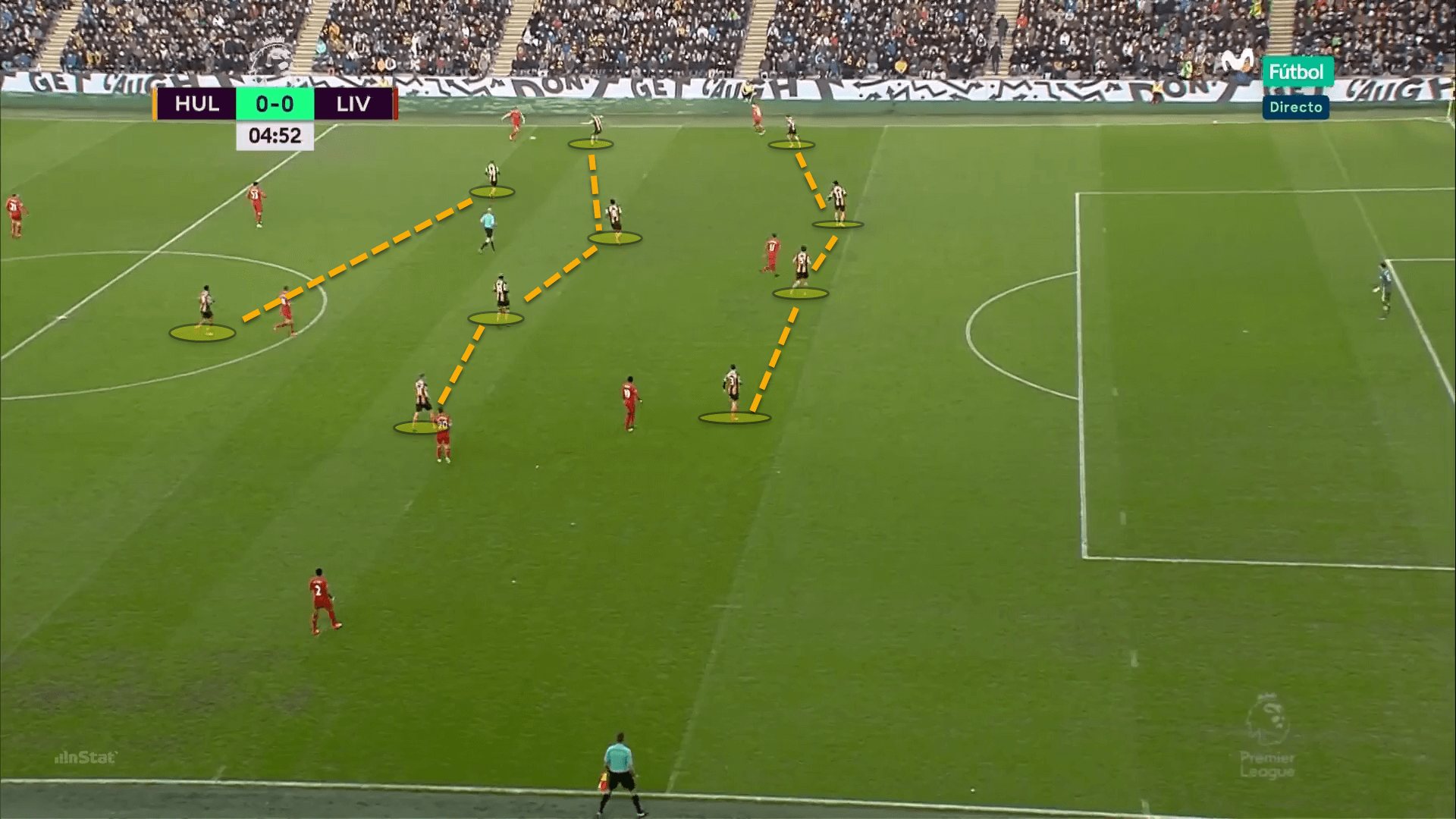
In this image, an example of this mid-to-low block can be seen. The 4-4-2 block is very narrow and compact between the lines, making it extremely difficult for Liverpool to play through.
The reason Silva likes his sides to be compact between the lines in a mid-level block is that the players have solid connections between each other and can suffocate ball-receivers with numerous bodies. This can be achieved in a low block too, but it is much more difficult to counterattack from the defensive third than the middle third.
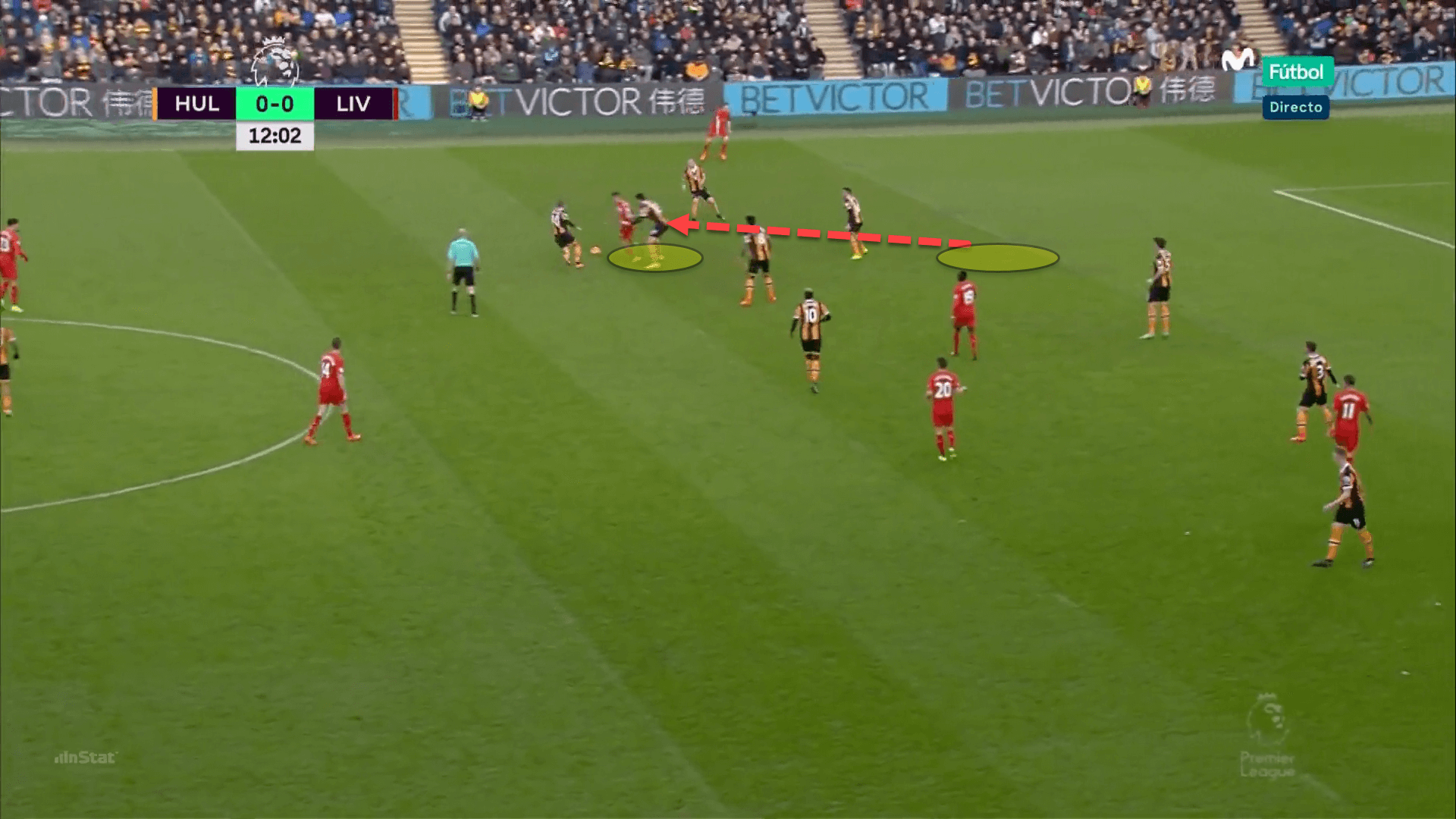
Here, Liverpool have found Coutinho in a tiny pocket of space between the lines but Ranocchia aggressively leaves his position as a central defender to come out and close him down and force the Brazilian back outside.
Hitting teams on the break
As already stated earlier in this article, whilst Silva likes his side to have possession of the ball, his teams can be very conservative too, particularly in bigger games, sitting deep and soaking up pressure.
In the previous section, we analysed how he demands that his teams are proactive when defending. Then, when they win back possession, Silva instructs his players to counterattack with pace, verticality, numbers, and precision.
The wingers are particularly important in this phase of play as they are usually the fastest players on the team. They provide the width, stretching the opposition’s backline during the transition, and also provide runs in behind the backline.
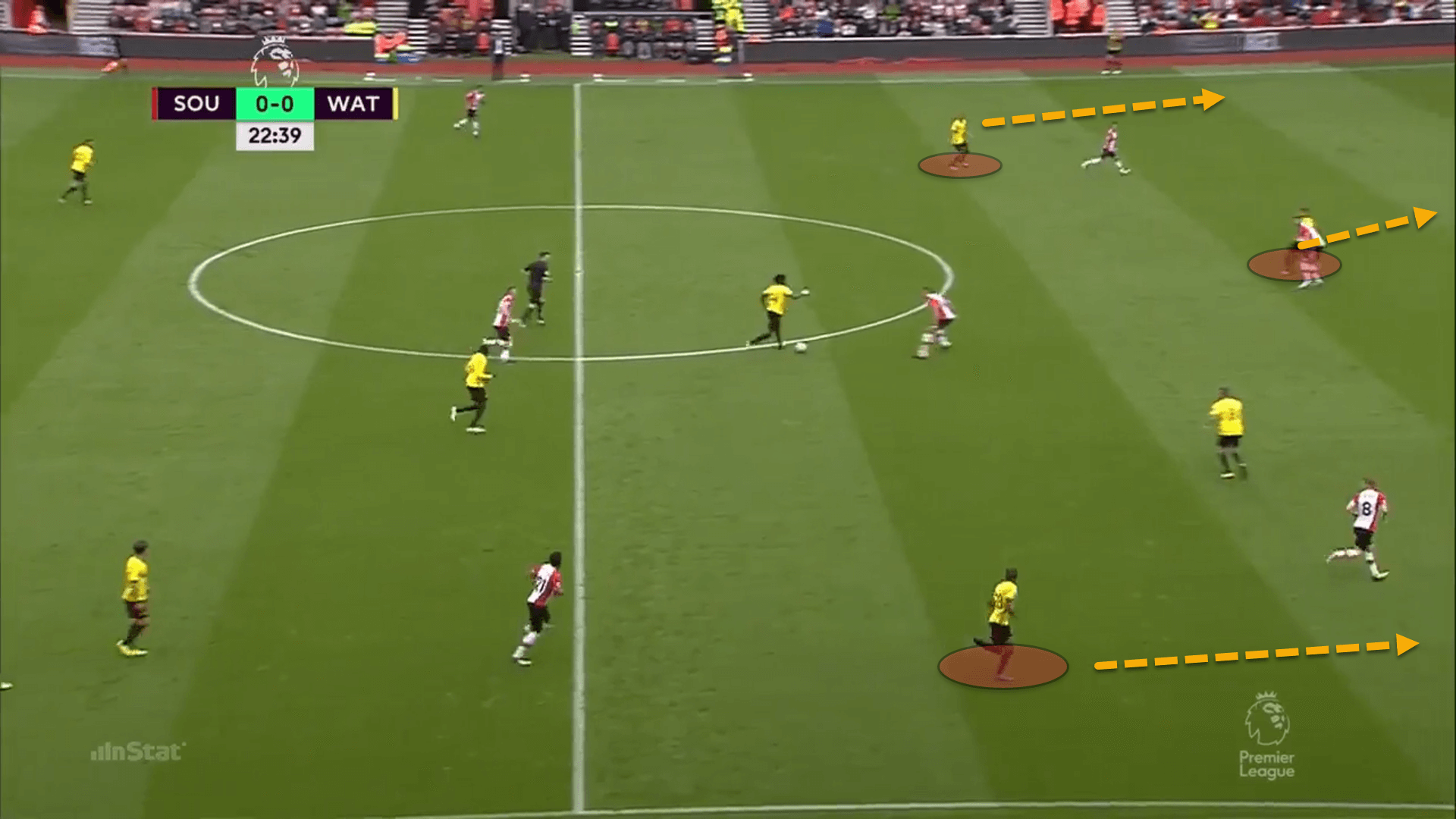
In this scenario, Watford have just regained possession of the ball and are looking to transition rapidly. Richarlison and Andre Carrillo are wide on the flanks, making runs in behind the Southampton defensive line whilst Andre Gray is also attacking the depth.
As can be seen in this image, Southampton’s defensive line is quite stretched which makes counterattacking much easier and more effective because defenders will be left in 1v1 situations.
Rapid attacking transitions are something that will become commonplace at Fulham. Bobby Decordova-Reid and Cavaleiro could be vital to these fast counterattacks with their pace in behind. Richarlison played some of his best football under Silva playing a similar role so these two could become major cogs in the new coach’s wheel.
Last season, Fulham averaged 2.35 counterattacks per 90 in all competitions under Scott Parker with 29.8 percent ending in shots. It is likely that this number will be higher with even more efficiency in the 2021/22 season when Silva gets his side playing the style of football that he wants them to play.
In contrast to Everton in 2018/19, the Toffees averaged 3.21 counterattacks per 90 with 31.2 percent ending in a shot on goal.
Conclusion
Overseas, Silva still has a reputation as a very good young manager. However, in England, this reputation is extremely damaged. Failure with Fulham could signal the end for the Portuguese manager at an English club.
On a more positive note, helping Fulham to bounce straight back up to the Premier League would severely mend the damage put on his name from previous jobs within the country. Silva needs to be backed though in the summer transfer market if this is to become a reality. While there is still a strong core of players in the squad, there is a number of positions that need strengthening if the Cottagers are to compete this season.
One would argue that an entire spine is needed and there is still quite a lot of deadwood within the squad too that needs to be rectified. Should Silva bring in a couple of players in the coming weeks, they will surely be one of the favourites to win the division come May.






Comments